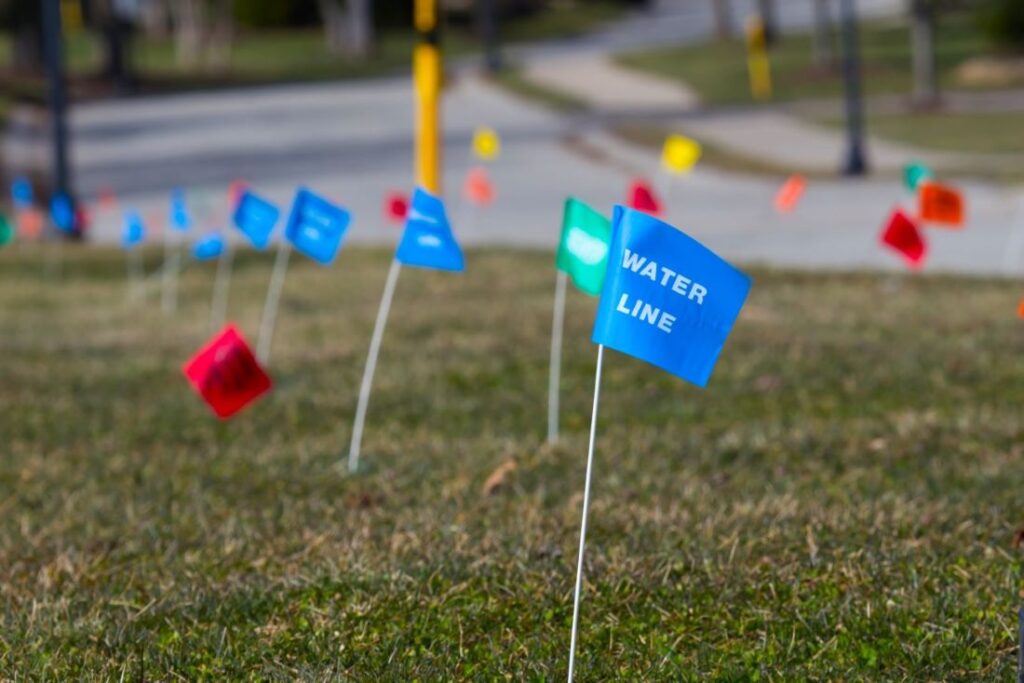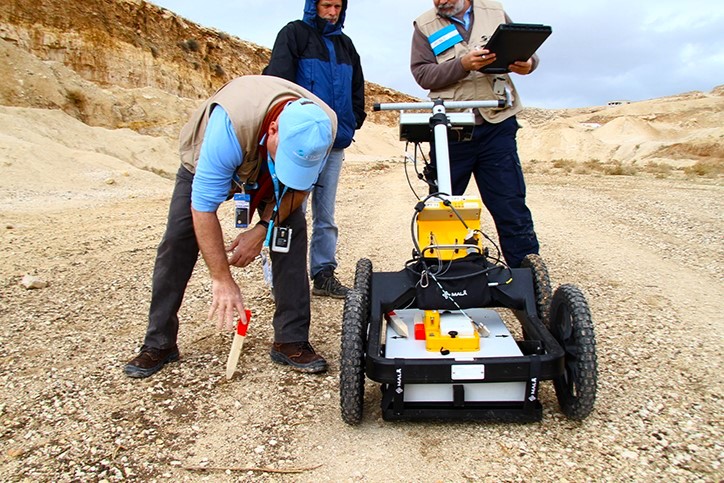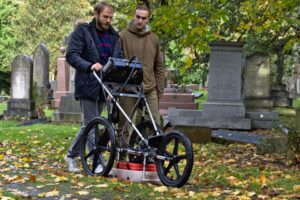What is GPR? Why Ground Penetrating Radar Scanning is Essential
For construction engineers, archaeologists, and criminologists, ground penetrating radar (GPR) isn’t just important—it’s absolutely essential, a superpower that provides an indispensable edge to a wide range of projects. Have you ever dreamed of having X-ray vision like Superman—seeing through concrete bridges, underneath buildings, and into the earth itself? In a way, ground penetrating radar lets you do just that.
Invented in the 1920s, this incredible technology is actually older than the Man of Steel himself (who first leaped tall buildings in a single bound in 1938). But only in the last several decades has GPR become an all-important tool in fields as diverse as private utility locating to mining and cemetery mapping—even NASA is getting in on the game!
What is ground penetrating radar?
Ground penetrating radar is a non-intrusive, geophysical method for investigating subsurface areas, including underground expanses, as well as solid materials (like concrete). A GPR unit usually looks like a small, silent lawnmower with a thin computer mounted on the handlebars. It’s rolled back and forth over the area in question to produce an image of the subterranean zone.
How does ground penetrating radar scanning work?
GPR “sees” beneath the surface by sending out thousands of pulses of electromagnetic energy (also known as radar waves) every second. Radar waves work a bit like sound waves, which you’re probably more familiar with. Think of it this way: If you yell into an empty warehouse, it will sound different than if you yell into a warehouse packed full of construction supplies. You can discern the difference without opening your eyes.
The pulses from the GPR unit encounter various materials under the surface, including soil, wood, water lines, empty spaces, plastic cables, and even archaeological ruins. They interact with the different types of materials in different ways, and then they bounce back—just like an echo made by sound waves. The GPR unit measures all the “echoes” and then converts the data into a 3D image of the subsurface area. A trained specialist then interprets this image to learn what’s underground without ever picking up a shovel.
Why are GPR services important?
Employed in a wide variety of industries, GPR is a crucial tool for investigating and mapping a subterrestrial site. Because it’s non-invasive and non-destructive, ground penetrating radar scanning can make worksite projects safer, more efficient, and less expensive—especially when it prevents expensive damages. It’s considered vital technology in the construction industry as well as in telecommunications, renewable energy, forensic investigations, and archaeology. Even NASA is using GPR to map the subsurface of Mars.

What are GPR services used for?
GPR paints a picture of the subterranean world that provides valuable insights about its composition, condition, and integrity—including any existing infrastructure it contains. Let’s take a closer look at a few of the most common GPR services.
Private Utility Locating
Know what’s below before it’s too late. Digging into a water line, conduit, or cable can really disrupt your project—and send your expenses soaring. With GPR location services, you can precisely detect and assess underground utilities and infrastructure before you dig in the wrong place.
Read more about this area of our work by visiting our landscaping projects page.
Concrete Scanning
Despite its name, ground penetrating radar isn’t just for the ground beneath your feet. It can “see” underneath other surfaces as well, including thick concrete walls and structures. GPR concrete scanning can accurately reveal rebar and post-tension cables, and it can also identify issues like cracks and defects before they become insurmountable problems.
Read more about this area of our work by visiting our concrete inspections page.
GPR Cemetery Mapping
Honoring our loved ones’ final resting places requires an accurate knowledge of their location. However, lost, damaged, or incomplete historical records can make cemetery mapping a challenge. GPR can help clarify a cemetery’s organization and even find unmarked graves.
Read more about this area of our work by visiting our cemetery services page.
Archaeological Discoveries
Ground penetrating radar has revolutionized the field of archaeology; scientists no longer need to dig into (and destroy parts of) a site to learn what lies beneath. GPR has been instrumental in finding and identifying historic and cultural heritage sites across the globe, including a Viking ship burial in Norway, monumental Roman ruins in Croatia, and prehistoric tent rings in the Arctic—just to name a few.
Read more about this area of our work by visiting our archaeological site assessment page.
Forensic Investigations
Detectives and other law enforcement personnel use GPR to unearth buried evidence, including weapons and victims’ remains. The forensic data provided by GPR has helped to solve countless crimes and incarcerate lawbreakers with hard evidence that might otherwise have been lost.
Read more about this area of our work by visiting our forensic inspections page.
Detecting Voids
We’ve all seen the sinkholes on TV. Sinkholes, washouts, settlement gaps, and other types of empty underground spaces (called voids) are disasters waiting to happen. They can go unnoticed for years until a critical safety issue arises, causing extensive damage and even loss of life. Detecting voids early with GPR can save lives and protect your property from irreversible damage.
Read more about this area of our work by visiting our void detection page.

Benefits of Professional GPR Services
Accurate. Efficient. Reliable. Ground penetrating radar services can be an invaluable tool whether you’re starting a construction project, launching a forensic investigation, or exploring an archaeological site. But you need more than tools—you need a team of professionals with the experience and expertise to interpret the GPR data and provide essential insight. We tailor our GPR services to fit your needs and budget with different levels of reporting and imagery so that you get just the right data you need.
Unlock the hidden information beneath your feet so you can make smart decisions and prevent expensive mistakes. Save time and do it right the first time with ground penetrating radar scanning by Wood Inspection Services.
Would you like to learn more about GPR and what it can do for you? Get in touch with us today! Wood Inspection Services, Inc. proudly serves the DFW Metroplex, Austin, and San Antonio, Texas, areas.
Additional References
- https://www.science.org/doi/10.1126/sciadv.abp8564
- https://www.sciencedirect.com/topics/materials-science/ground-penetrating-radar
- https://www.sciencedirect.com/topics/agricultural-and-biological-sciences/ground-penetrating-radar
- https://www.ncbi.nlm.nih.gov/pmc/articles/PMC6968642/
- https://www.nytimes.com/2020/11/11/world/europe/viking-discovery.html
- https://www.heritagedaily.com/2022/10/monumental-roman-structure-identified-using-ground-penetrating-radar/
- https://www.nps.gov/articles/gprarchaeology.htm
- https://weinspecttexas.com/our-services/ground-penetrating-radar/

